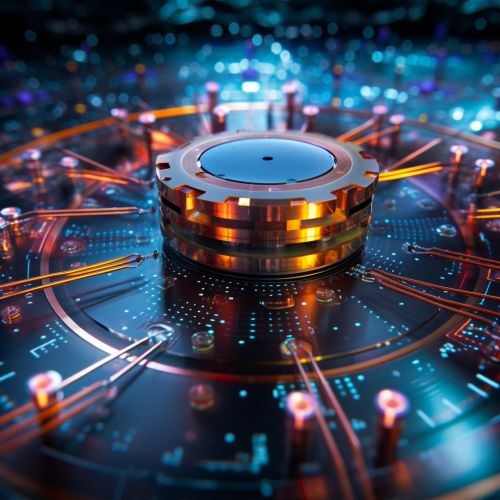Quantum Computing with Quantum Optomechanical Systems in Quantum Theory
Introduction
Quantum computing is a rapidly growing field of study that leverages the principles of quantum mechanics to process information. One of the key components of quantum computing is the quantum optomechanical system, which is a system that couples the mechanical motion of an object to the quantum state of light. This article will delve into the intricacies of quantum computing with quantum optomechanical systems in quantum theory.
Quantum Computing
Quantum computing is a type of computation that uses quantum bits, or qubits, instead of the classical bits used in traditional computing. Qubits are unique in that they can exist in a superposition of states, allowing them to perform multiple calculations simultaneously. This property, along with entanglement and interference, are the key principles that make quantum computing vastly more powerful than classical computing for certain tasks.


Quantum Optomechanical Systems
Quantum optomechanical systems are systems in which the mechanical motion of an object is coupled to the quantum state of light. This coupling allows the mechanical motion to be controlled and measured with unprecedented precision, opening up new possibilities for quantum information processing and quantum sensing. The field of quantum optomechanics is a relatively new one, but it has already shown great promise in a variety of applications, from quantum computing to precision measurement.
Quantum Theory
Quantum theory, also known as quantum mechanics, is the theoretical basis of modern physics that explains the nature and behavior of matter and energy at the quantum level. It describes phenomena that are unexplainable by classical physics, such as superposition and entanglement. Quantum theory is crucial to understanding how qubits and quantum optomechanical systems function.
Quantum Computing with Quantum Optomechanical Systems
Quantum optomechanical systems can be used in quantum computing to create and manipulate qubits. The mechanical motion of the system can be used to control the state of the qubits, allowing for precise manipulation of quantum information. This can be used to perform quantum computations, which can solve certain problems much more efficiently than classical computers.
Challenges and Future Directions
Despite the promising potential of quantum computing with quantum optomechanical systems, there are still many challenges to be overcome. These include technical challenges such as maintaining quantum coherence and dealing with quantum decoherence, as well as theoretical challenges such as understanding the fundamental limits of quantum computation. However, ongoing research in this field is continually pushing the boundaries of what is possible, and the future of quantum computing with quantum optomechanical systems looks bright.
